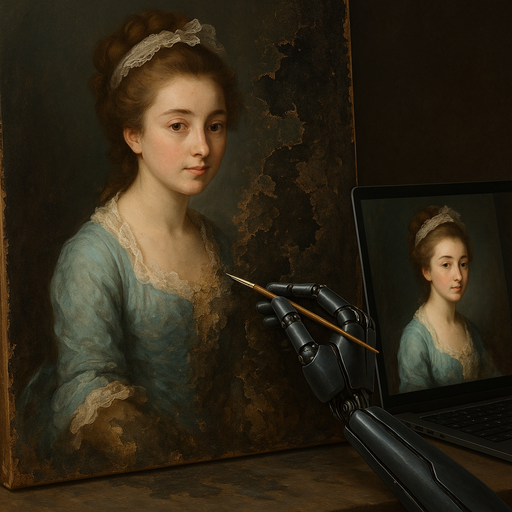A groundbreaking digital restoration method using artificial intelligence enables the restoration of artworks in hours instead of the traditional months-long process.

G. Ostrov
A revolutionary approach to art restoration has been developed by a researcher at the Massachusetts Institute of Technology. Graduate student Alex Kachkin demonstrated an innovative method for restoring paintings using artificial intelligence, successfully restoring a work by an unknown 15th-century Dutch master.
The ancient painting had suffered serious damage over the centuries: the surface was covered with a network of cracks, and many fragments were irretrievably lost. Traditional restoration of such a work would have required more than 230 hours of meticulous specialist work.
Digital Restoration Stages
The restoration process included several key stages:
Scanning and Digital Processing: After high-precision scanning of the original, AI algorithms automatically filled in minor damage by analyzing the color palette of neighboring areas and restoring lost ornaments.
Manual Refinement: The most complex elements - deep cracks and completely lost character faces - Kachkin refined in Adobe Photoshop, using fragments from other works by the same artist. The researcher deliberately refused to use generative neural networks to preserve the historical authenticity of the work.
Creating a Protective Layer: The restored elements were transferred to a separate digital layer, which was then printed on the thinnest transparent polymer. This film is placed directly on the original canvas.
Advantages of the New Method
The polymer film is practically invisible to the viewer, but can be easily removed without the slightest damage to the original if necessary. This opens up possibilities for repeated restorations in the future using more advanced technologies.
The entire process of applying the restorative film took only 3.5 hours - 65 times faster than the traditional approach. According to Kachkin, the method is particularly effective for works of relatively low value, for which museums usually lack resources for restoration.
Impact on Museum Practice
Statistics show that about 70% of museum paintings are currently hidden from the public due to various damages. The introduction of digital restoration technologies could radically change this situation, allowing the general public to see previously inaccessible masterpieces.
More about the project can be found on MIT's official website: https://www.mit.edu
In case of any problems, write to us, we will help quickly and efficiently!




